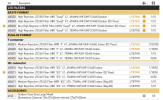prpr
Well-Known Member
For completeness, I found the Televes catalogue listings:

and mine is one of these:
https://www.triax.com/product/tlp-048-lte700-filter/

and mine is one of these:
https://www.triax.com/product/tlp-048-lte700-filter/
Last edited:


